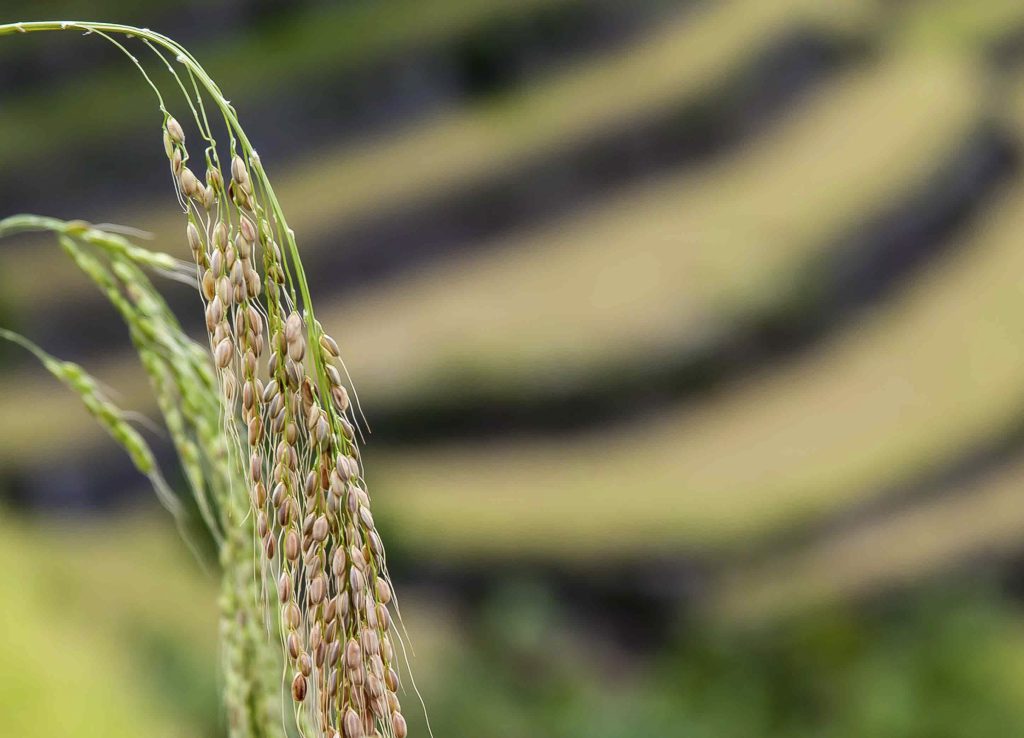
While pharmaceutical drugs are taken in when common illnesses strike, indigenous knowledge in three provinces comprised traditional rice varieties (TRV) as home remedies.
In the “Ethnoguided Survey and Collection of Philippine Medicinal Traditional Rice Varieties,” 18 rice varieties were identified as medicinal in Palawan, North Cotabato, and Zamboanga del Norte. Across three sites, TRVs are used to treat fever, cough, measles, stomach ache, and diarrhea.
Floper Gershwin Manuel, research lead, said that in Rizal, Palawan, the community herbalist who is regularly consulted for various illnesses, identified Munahan, Minandiris, and Pindinga as medicinal.
“The roots of Munahan is used to treat urinary tract infection; the grains and leaves of Minandiris or Binaritos are believed to regain men’s virility and treat herpes; while the roots, leaves, and grains of Pindinga are supposed to cure allergy, itchiness, and bloating,” Manuel explained.
Manuel, an anthropologist, noted the common belief of preparing grains in odd number, specifically, in most cases, seven grains. In treating itchiness thru Pindinga, for example, decoction is produced by boiling seven grains.
“This could be because in Pythagorean era, odd numbers were related to origins of diseases,” he said.
According to the senior science research specialist, locals use rice as medicine because it is readily available within the neighborhood and is much cheaper than the generic drugs. Moreover, crossing rivers 2-12 times to reach the nearest health center compels them to try household remedies before seeking physician’s help.
In Arakan Valley, North Cotabato, Manobo elders shared that Dinorado, Bagtok, and Sawwi are used in treating indigestion and other sicknesses including those that may have been caused by “supernatural” powers.
To treat indigestion, Manuel said that patients chew few pieces of raw rice grain. However, community herbalist informed that rice cannot be eaten when suffering from other sickness.
In dealing with sickness caused by supernatural or “magic,” the community herbalist, who performs rituals and incants prayers, serves the cooked black variety of Bagtok to the patient. Moreover, the white variety of Sawwi is used in recovering strength from sickness.
In Sergio Osmeña, Zamboanga del Norte, Magaraya is known to treat fever, stomach pains, diarrhea, colds, cough, measles, body pains, and any illness.
During field work, Manuel interviewed a mother who shared that nine of her children have never been confined to a hospital and that they were only treated with traditional/herbal medicine.
He also said that the municipal doctor in this town noted the use of Magaraya as medicine, although it is not included among the country’s Philippine traditional medicines.
“[The doctor] said that patients only come [to the health center] when they have not yet recovered from their illnesses three or seven days of suffering. If he asks them what they have taken so far, they just say ‘tambal (herbal) only’, Maragaya,” he shared.
Manuel added that ethnobotanical studies confirm that certain plants such as TRVs have role in the healthcare system of some communities for long time, providing benchmark for scientists to explore opportunities that these plant species may have to offer.
Meanwhile, PhilRice food scientist Marissa Romero said that TRVs, which are usually pigmented, is rich in antioxidants such as phenolic compounds, vitamin E derivatives, and y-oryzanol that are effective free radical scavengers.
“There are claims about the medicinal benefits of rice but in the Philippines, we have yet to conduct clinical studies to verify these properties,” Romero said.
Similar study conducted by Rosa Mia Cabanting and Loida Perez are published in Journal of Ethnopharmacology 2016.
For more information about this study, the lead researcher can be reached through flop.gershwin @gmail.com.




